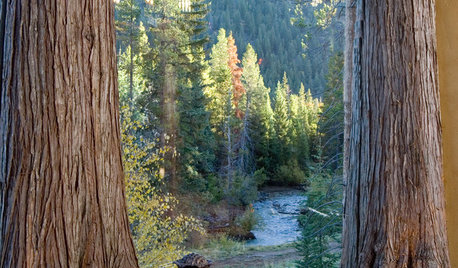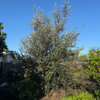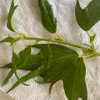Help---what kind of a tree is this? (A walnut?)
artemis78
14 years ago
Related Stories

CONTEMPORARY HOMESHouzz Tour: A Contemporary Home With One-of-a-Kind Features
Salvaged doors, accent walls and dashes of bright color make for unexpected touches inside
Full Story
REMODELING GUIDESWisdom to Help Your Relationship Survive a Remodel
Spend less time patching up partnerships and more time spackling and sanding with this insight from a Houzz remodeling survey
Full Story
INSIDE HOUZZInside Houzz: A Walnut Wall of Storage Opens Up a Kitchen
A 30-foot wall of storage frees up cooking areas and counters for food prep and entertaining
Full Story
MATERIALSWoodipedia: Walnut Wows in Traditional and Modern Settings
With its rich color and lustrous polished finish, walnut is a favorite wood for all kinds of millwork
Full Story
HOUZZ TVHouzz TV: Love and Geometry in an Inspired One-of-a-Kind House
Architect Bart Prince designed the inventive sculptural addition for this Los Altos, California, home
Full Story
REMODELING GUIDES9 Creative Window Designs for All Kinds of Spaces
When standard windows just won't cut it, these innovative options are a breath of fresh design air
Full Story
COLORThe Best White and Pastel Colors for Every Kind of Natural Light
Understand how sunlight affects your rooms and get tips on choosing paint colors for each type of exposure
Full Story
FEEL-GOOD HOME10 Kinds of Flowers and Foliage for Modern Spaces
Match the plant to the feeling you want to evoke, be it fun, rustic, tropical or romantic
Full Story
LANDSCAPE DESIGNWhat Kind of Gardener Are You? Find Your Archetype
Pick from our descriptions to create a garden that matches your personality and tells your story
Full StorySponsored
Your Custom Bath Designers & Remodelers in Columbus I 10X Best Houzz
More Discussions









hosenemesis
artemis78Original Author
Related Professionals
Grand Haven Landscape Architects & Landscape Designers · Roosevelt Landscape Architects & Landscape Designers · Wilmington Landscape Contractors · Coeur d'Alene Landscape Contractors · Columbine Landscape Contractors · Deer Park Landscape Contractors · Haverhill Landscape Contractors · Las Vegas Landscape Contractors · Fallbrook Swimming Pool Builders · Richmond Window Contractors · Atlanta Window Contractors · Dalton Window Contractors · Farragut Window Contractors · Mableton Window Contractors · San Juan Capistrano Window Contractorshosenemesis
artemis78Original Author
nonmember_gw
calistoga_al ca 15 usda 9
socal23
artemis78Original Author
hosenemesis
ltecato
artemis78Original Author
hoovb zone 9 sunset 23
calistoga_al ca 15 usda 9
hosenemesis